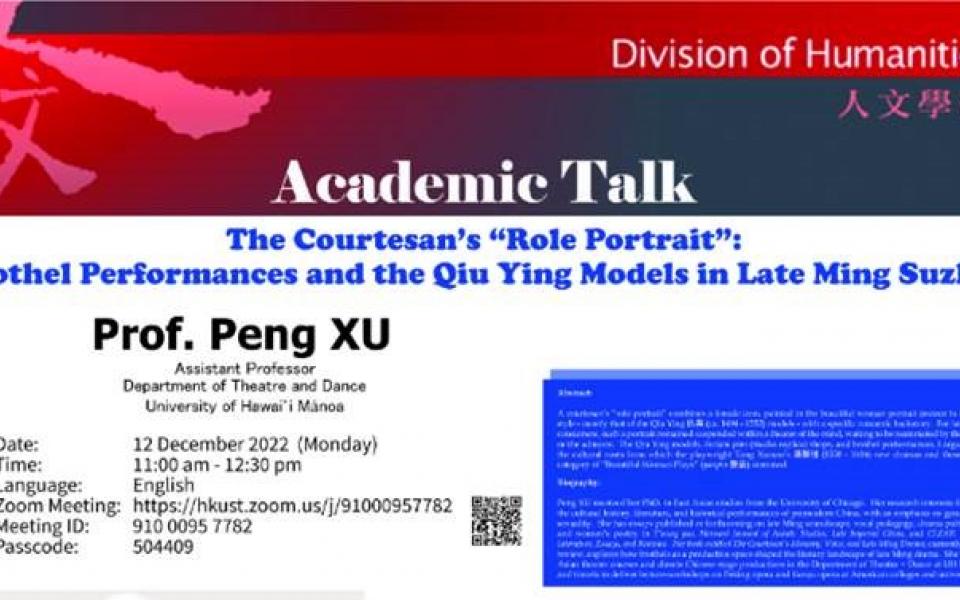Abstract:
A courtesan’s “role portrait” combines a female icon, painted in the beautiful woman portrait (meiren tu 美人圖) style—mostly that of the Qiu Ying 仇英 (ca. 1494–1552) models—with a specific romantic backstory. For late Ming consumers, such a portrait remained suspended within a theater of the mind, waiting to be reanimated by the copier or the admirer. The Qiu Ying models, Suzhou pian (studio replica) shops, and brothel performances, I argue, were the cultural roots from which the playwright Tang Xianzu’s 湯顯祖 (1550–1616) new dramas and those in the category of “Beautiful Woman Plays” (yanpin 艷品) stemmed.
Biography:
Peng XU received her Ph.D. in East Asian studies from the University of Chicago. Her research interests focus on the cultural history, literature, and historical performances of premodern China, with an emphasis on gender and sexuality. She has essays published or forthcoming on late Ming soundscape, vocal pedagogy, drama publishing, and women’s poetry in T’oung pao, Harvard Journal of Asiatic Studies, Late Imperial China, and CLEAR: Chinese Literature, Essays, and Reviews. Her book entitled The Courtesan’s Memory, Voice, and Late Ming Drama, currently under review, explores how brothels as a productive space shaped the literary landscape of late Ming drama. She teaches Asian theater courses and directs Chinese stage productions in the Department of Theatre + Dance at UH Mānoa, and travels to deliver lecture-workshops on Peking opera and Kunqu opera at American colleges and universities.
Meeting ID: 910 0095 7782
Passcode: 504409
